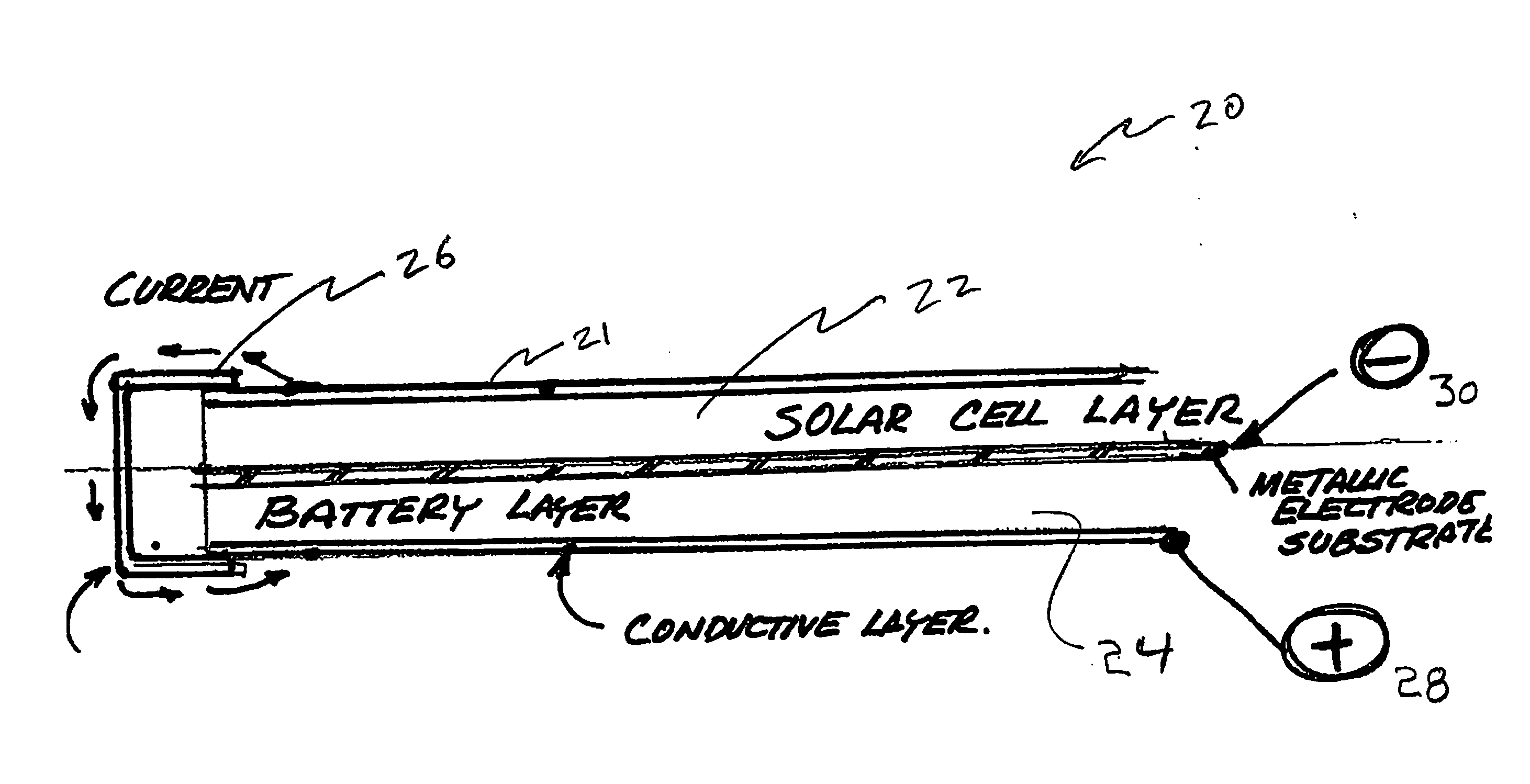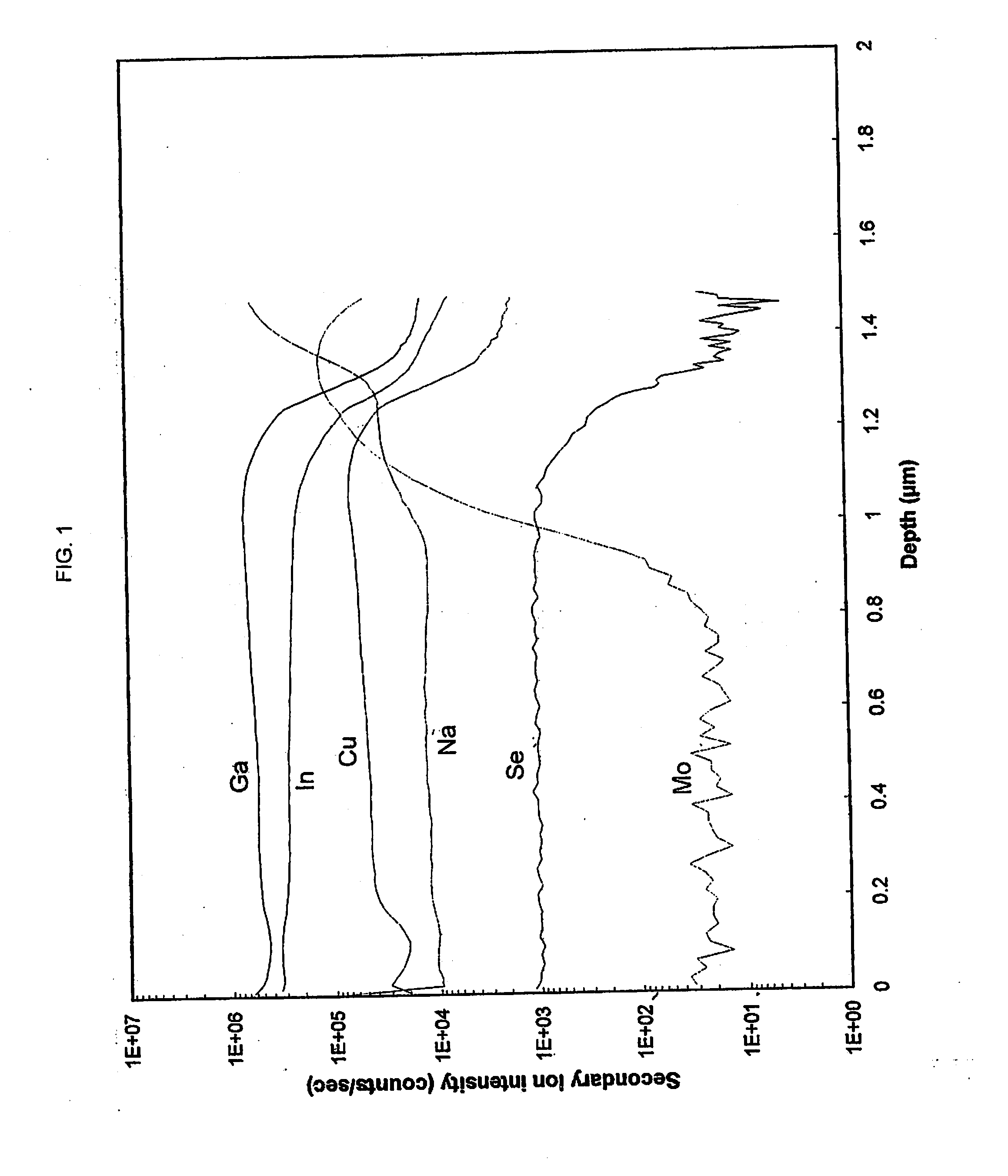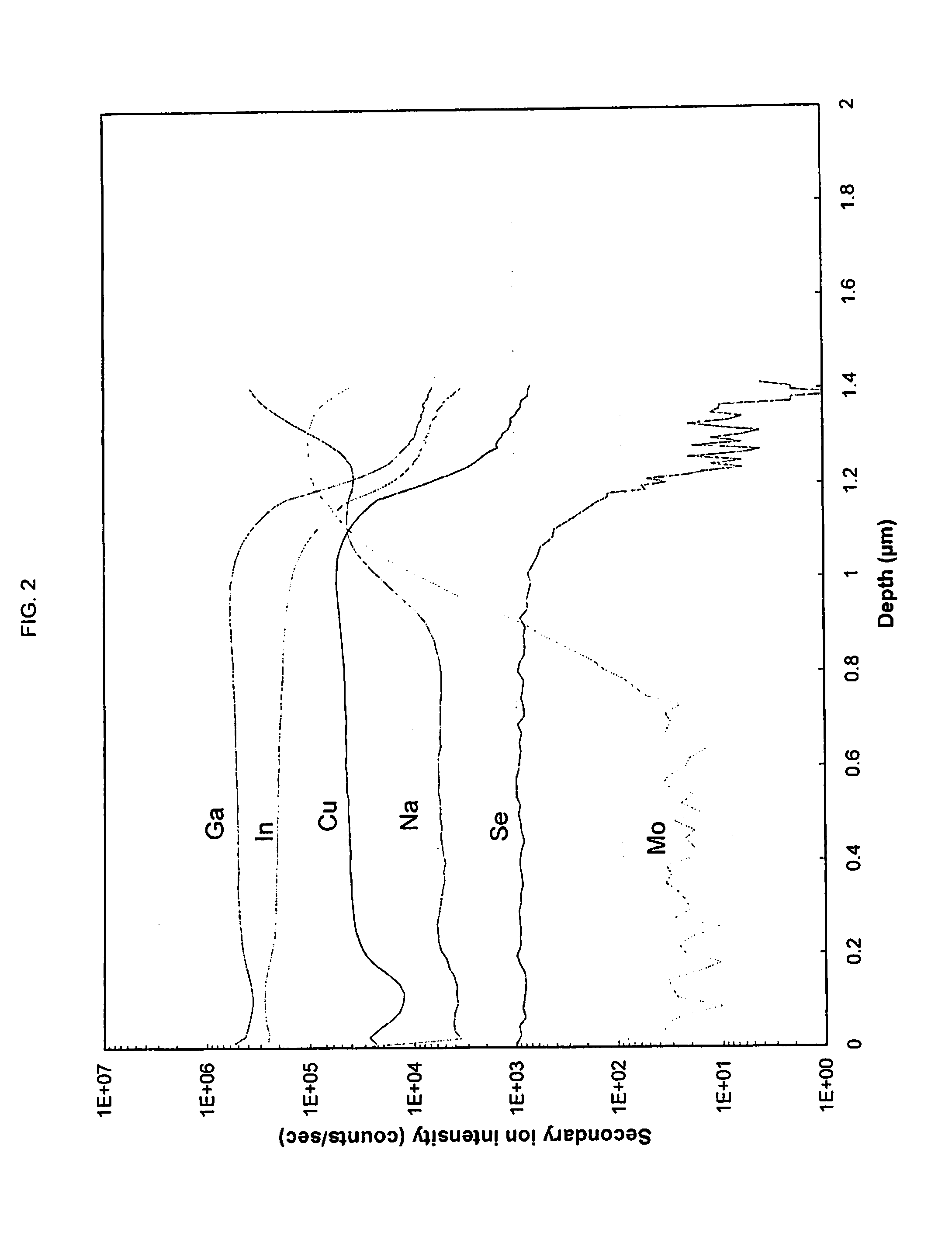Solar photovoltaic devices having optional batteries
- Summary
- Abstract
- Description
- Claims
- Application Information
AI Technical Summary
Benefits of technology
Problems solved by technology
Method used
Image
Examples
example 1
This example demonstrates the technique of producing a flexible solar cell wherein a glass surface is bonded to a flexible polymer substrate using an ACPF that can tolerate high temperatures. The process consists of drawing a molten rectangular glass ribbon through a suitable forming apparatus, followed by cooling the ribbon and subsequently depositing the said rectangular glass ribbon onto a sheet of polymer film that has been previously mounted onto a rotatable cylindrical mandrel.
A flexible solar substrate films were prepared that consisted of a two mil thick film of polyimide polymer sheeting Upilex S as the substrate onto which a rectangular glass ribbon array was deposited so as to yield a uniform soda lime glass surface. In this case the glass ribbon's cross-sectional dimensions were 300 microns wide by 30 microns thick. There was a spacing of approximately 100 microns between the ribbons. (Note: It is anticipated that ribbon width can be adjusted to as much as 600 to 800 mic...
example 2
This example provides embodiments that may be incorporated in a roll-to-roll production process. In these embodiments, an inorganic medium is mixed into the polymeric binder and this mixture is applied, e.g., to a supporting polymer substrate or alternatively to a metal foil substrate. This composite coating can be applied to one side or to both sides of the substrate.
In these embodiments, the polyamide-imide polymer used is Torlon 4000 T. and it is solubilized in a 1-methyl-2-pyrrolidinone solvent. The polymer then may be applied using a 5 mil wet film drawdown bar or by conventional air spray gun (Gravity Type). Curing is achieved by subjecting the coated substrate to a controllable temperature regime that progressively increased the temperature from 75° F. to 390° F. over a time interval of approximately 40 minutes.
The alkali silicate particles used are an anhydrous alkali silicate, SS-C-200 (PQ Corp.). Particle Size is such that 97% will pass through a 200 mesh screen. The weigh...
example 3
This example illustrates one embodiment of an optional layer that may be applied to provide a sealant for one or more layers of the PV device where desired, including, e.g., an ACPF layer or a layer made from an inorganic filled polymer composite coating. The optional layer comprises a neat polymeric film, which may be applied in any thickness, but which advantageously in some circumstances may be applied as a very thin coating to seal an ACPF. In such circumstances, such a coating also could be used to affect the rate of sodium migration from the ACPF to a CIGS deposition region.
1-methyl-2-pyrrolidinone85.7 percentPolyamide-imide resin14.3
This coating could be easily applied, e.g., over a previously applied ACPF or inorganic filled composite coating. Where used, the resulting film will present a smoother surface for subsequently applied layers such as a molybdenum electrode and / or CIGS absorber layer.
PUM
 Login to View More
Login to View More Abstract
Description
Claims
Application Information
 Login to View More
Login to View More - R&D
- Intellectual Property
- Life Sciences
- Materials
- Tech Scout
- Unparalleled Data Quality
- Higher Quality Content
- 60% Fewer Hallucinations
Browse by: Latest US Patents, China's latest patents, Technical Efficacy Thesaurus, Application Domain, Technology Topic, Popular Technical Reports.
© 2025 PatSnap. All rights reserved.Legal|Privacy policy|Modern Slavery Act Transparency Statement|Sitemap|About US| Contact US: help@patsnap.com



